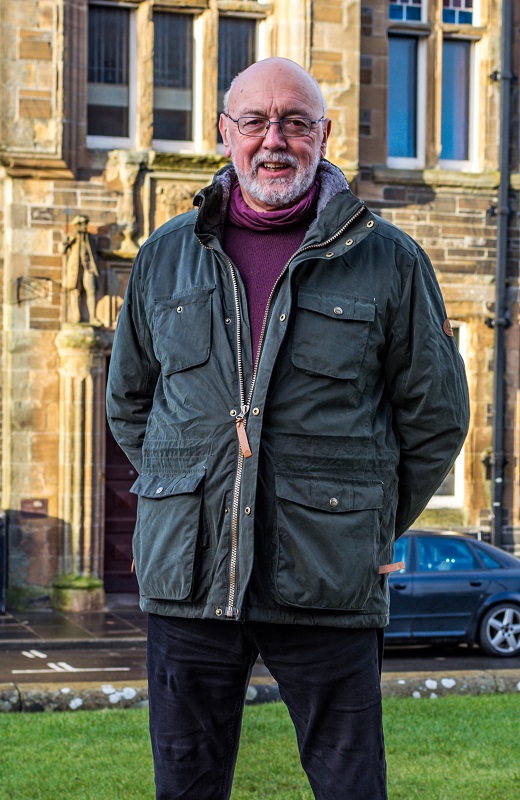The Pelamis Sea Snake lies dormant – the remains of one project to produce energy from the sea.
Scottish company Pelamis Wave Power (formerly Ocean Power Delivery), developed the sea snake which would use the motion of the sea to generate electricity. Pelamis became the first offshore wave machine to generate electricity into the grid, when it was first connected to the UK grid in 2004. The Pelamis P2, was tested off Orkney between 2010 and 2014. The company went into administration in November 2014, with the intellectual property transferred to the Scottish Government body Wave Energy Scotland.
Orkney Islands Council plans to decommission the device at a cost of over £150,000. John Ross Scott, a Scottish Green Councillor believes that the device should be preserved and in a museum to mark its importance in the history of renewables development in Orkney.
Councillor Scott said:

“Pelamis deserves to be recognised as the world’s first offshore wave power converter to successfully generate electricity. Scrapping it would be like destroying the Wright brothers’ plane. “
“While I appreciate that museums and galleries around the UK are facing hard times in the current financial crisis, I know that the Science Museum in London is taking a keen interest in preserving ground-breaking renewable technology and the Victoria and Albert Museum in Dundee, close by the home of Dr Richard Yemm who developed Pelamis, recently had a video show on the sea snake.
“Have they been approached? I think not!
“I don’t believe enough is being done to sell the story behind Pelamis and the historic connection it has to Orkney and Scotland where it was developed.
“Who knows there may even be a monied person out there who would want something quite unique like Pelamis in his or her collection.”
Orkney’s history of renewables is a remarkable one. The first wind turbine connected to the grid was at Costa Hill, Evie in 1955. You can read about that here: The 1955 Costa Hill Wind Turbine
Very little remains of that project which, if it had been continued, might have seen the world a very different place, but the continued reliance on fossil fuels put an end to Orkney’s wind power for several decades.


The Pelamis P2-001 device was decommissioned in April 2016 and sold to the Orkney Island Council for £1. The other device, P2-002 was sold to the European Marine Energy Centre for use as a test rig.
During its 2 year testing period the P2-001 provided 15,000 hours’ worth of valuable data. Commenintg at the time of its decommissioning Tim Hurst, Managing Director of Wave Energy Scotland said:
“Pelamis was an important break-through in wave energy converter development, creating a wealth of of knowledge and experience about technology development and operational management. Whilst Pelamis was a significant milestone in the industry, Wave Energy Scotland’s programme aims to build on that success and create a winning technology for the future.”
In Orkney we seem to be very poor at realising the contribution we have made to the development of renewable power.
Councillor Scott who is also the Orkney Greens Cultural spokesperson, added:
“While the passion people feel for the past is palpable and in the last 20 years Orkney has been at the forefront of innovation when it comes to Renewable Energy, I am a realist and understand that at this time there is no chance of developing say a museum of renewables here in Orkney even though it is very much seen as the birthplace of renewables.
“I am also told by experts that leaving it in the water would simply lead to escalating maintenance costs. It is also – at 150 metres long – a large device that would not fit easily into any on-land exhibition, although it is as big as a train and folk could walk through parts of it.
“The best solution would perhaps be to at least remove the nosepiece as an exhibit that highlights the size and power of the structure so that future generations can gaze in wonder at it and marvel at the pioneering spirit of Orcadians.
“The Council Recess is a time when governance is at its lowest, and I am not convinced that all avenues have been looked into selling Pelamis as an artifact.”
The Council bought Pelamis for £1 in 2017 and tasked Harbours to find a use for it. This included its possible use as a breakwater off Moaness, but the conclusion was that this was not financially viable, and the device has since been berthed at Lyness in Hoy awaiting disposal.
OIC has now set a deadline of 18th August for the Sea Snake’s removal.
Councillor Scott continued:
“I am not blaming Harbours for the lack of activity on this front. They checked out all that they could possibly do with it in the harbour environment but, as far as I am aware the significant heritage attached to it was forgotten.
“As far as I am aware – despite there being a dowry of £45,000 attached to the disposal that will allow it to be towed to a new location – there has been little or no interest. It is time to look at different ways to attracting attention to this marvellous machine.”
“All other versions of Pelamis have been destroyed so this is the one remaining original and its fate hangs in the balance Can it be saved for posterity as an example of the pioneering work on early wave power development or will it just be condemned like the others to the dustbin of time.”

To read more about the Costa Hill Wind Turbine download this research paper by Fiona Grahame:
Fiona Grahame
Categories: Local News, Science














